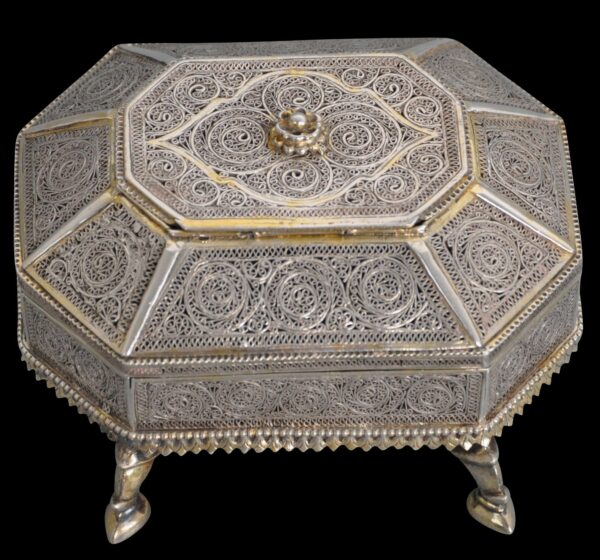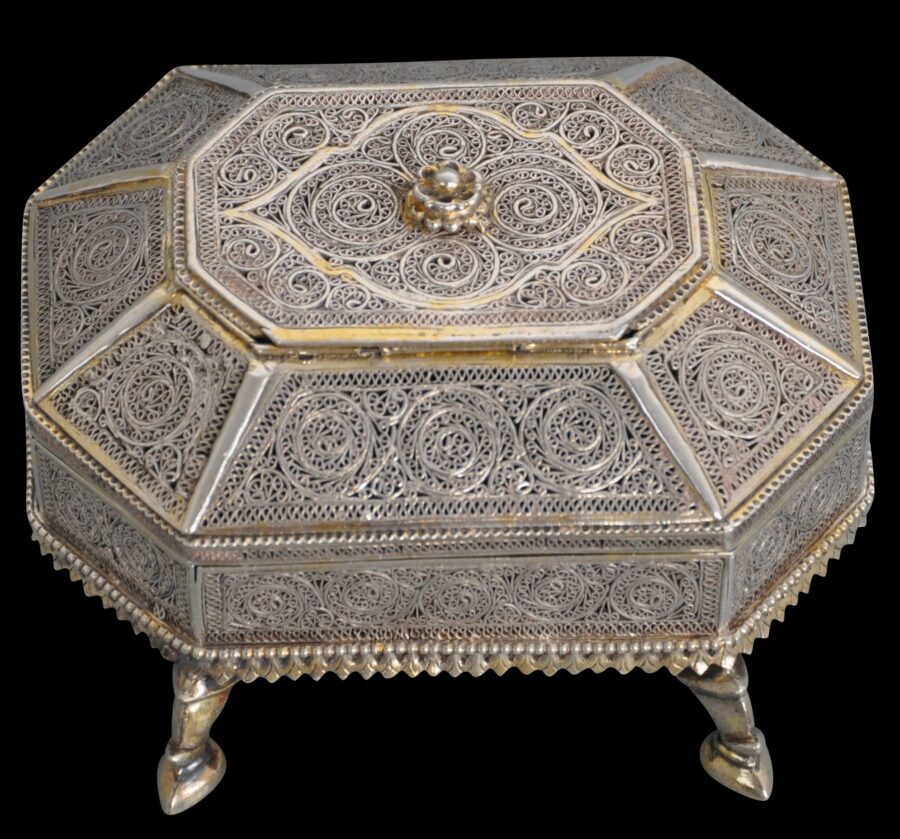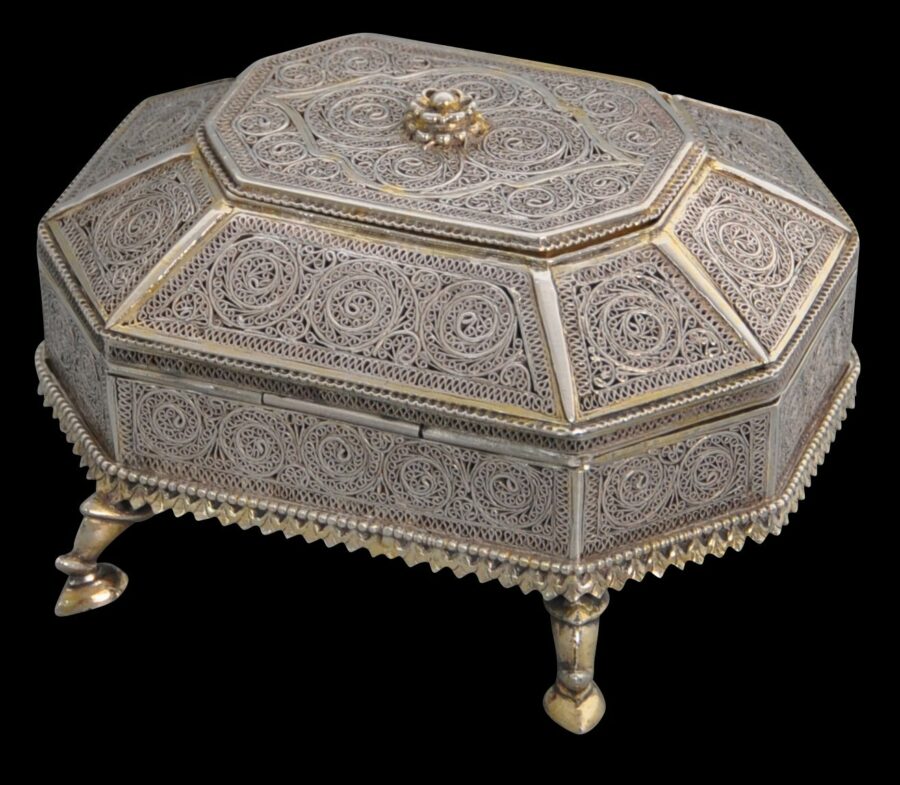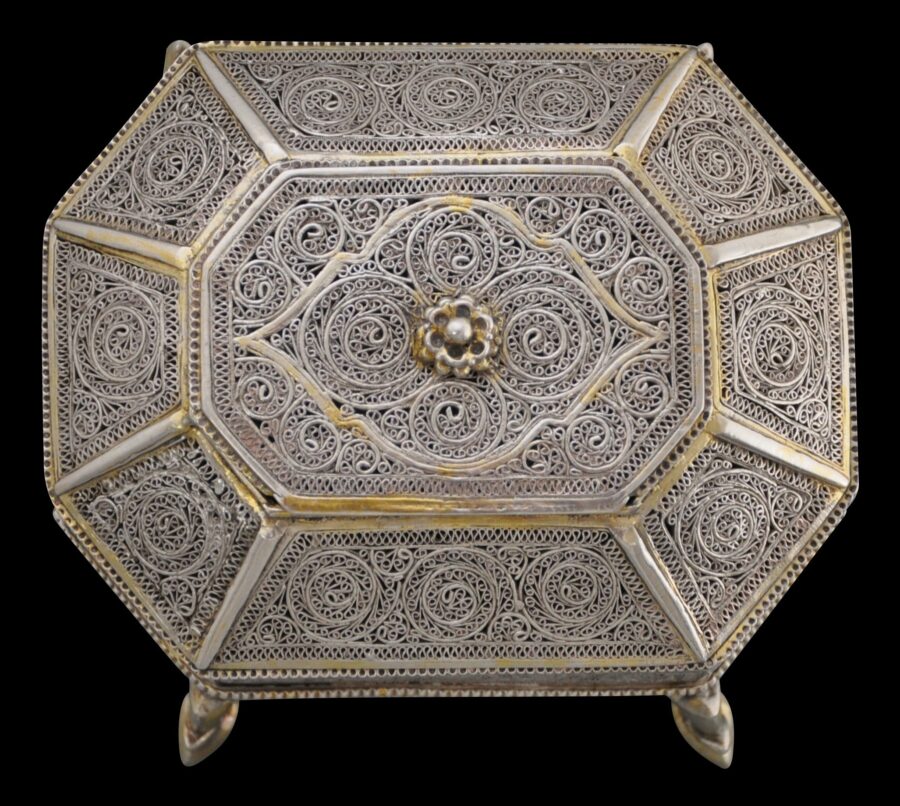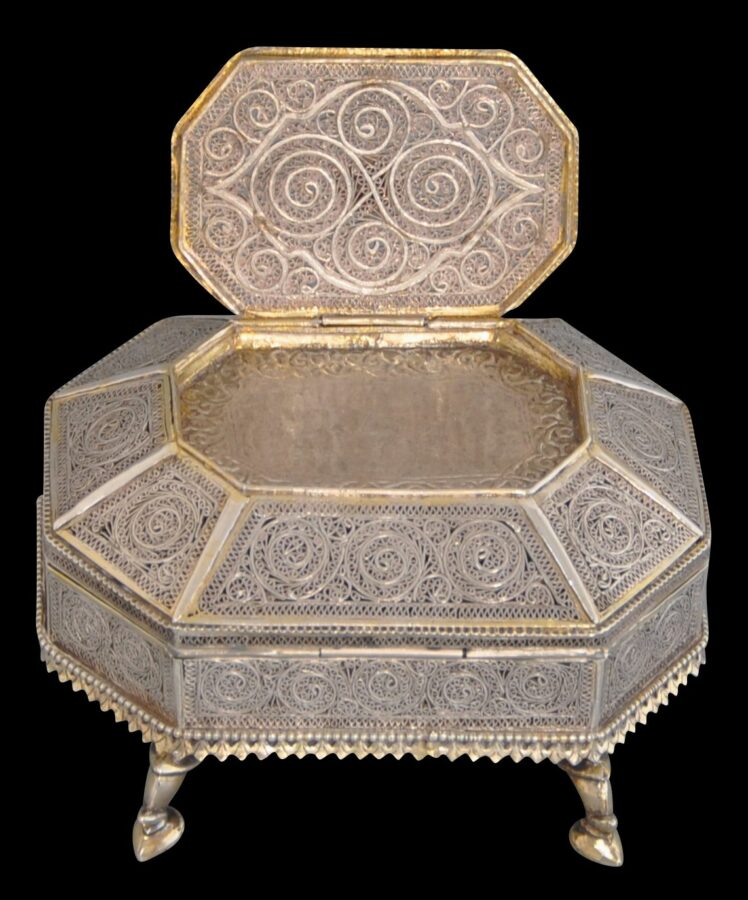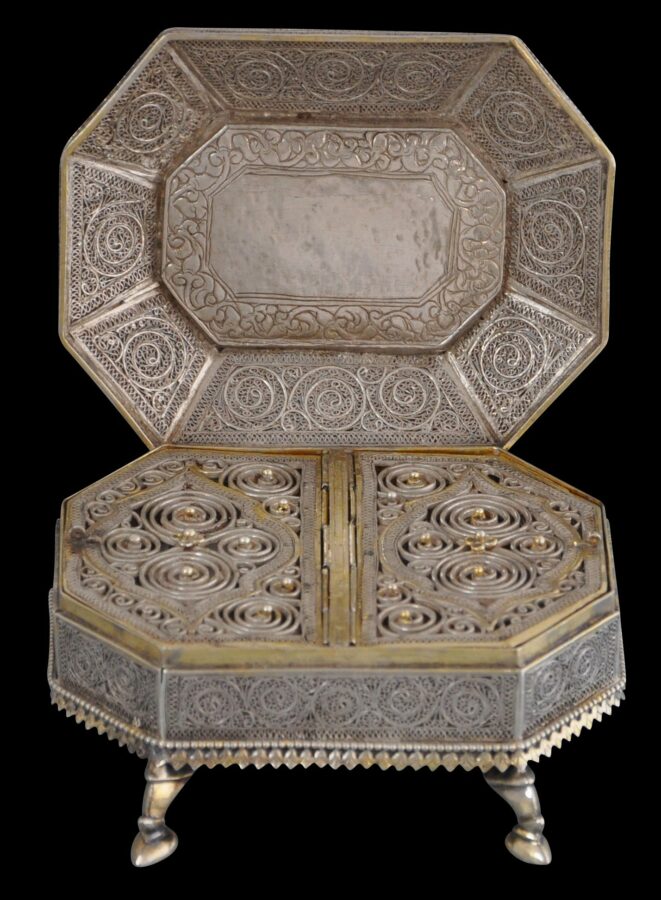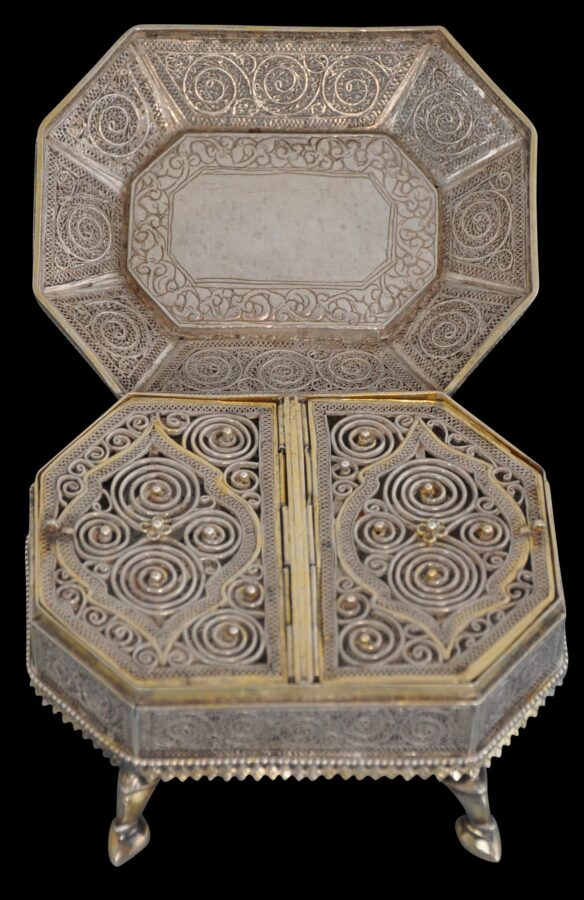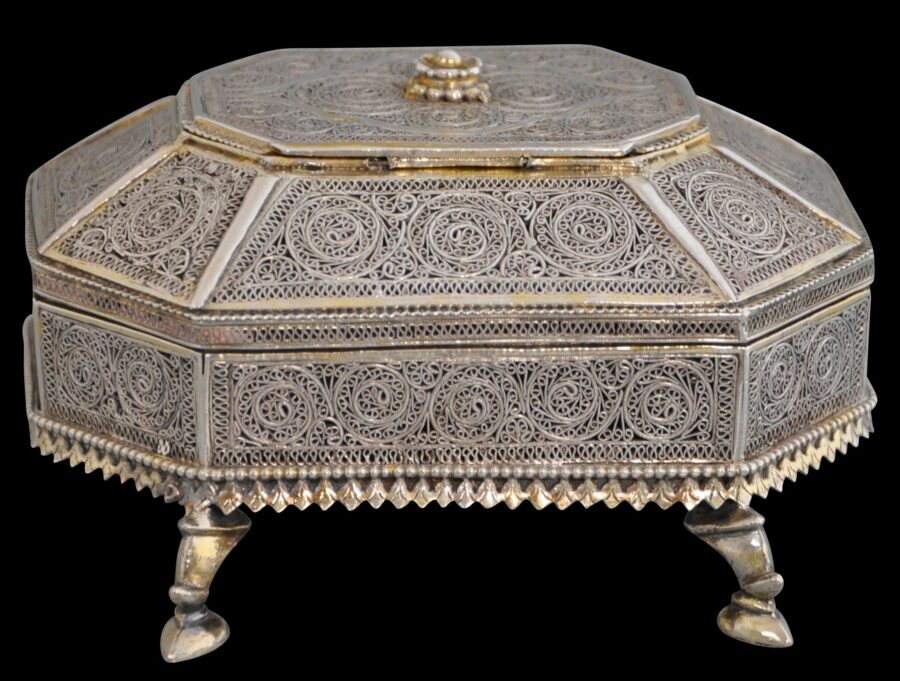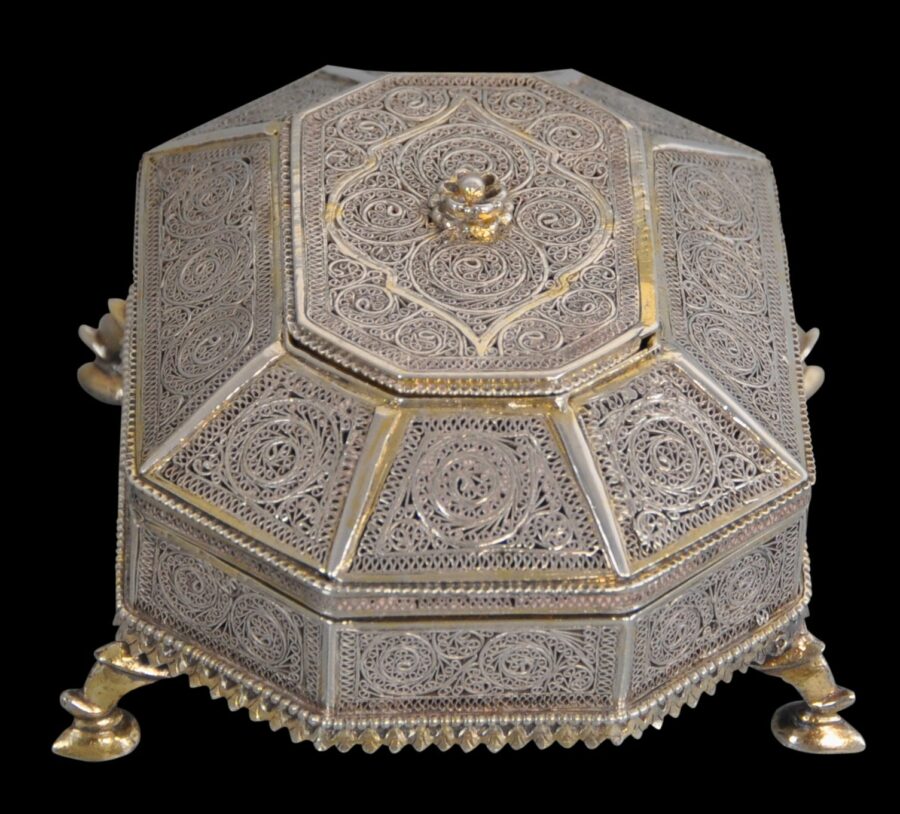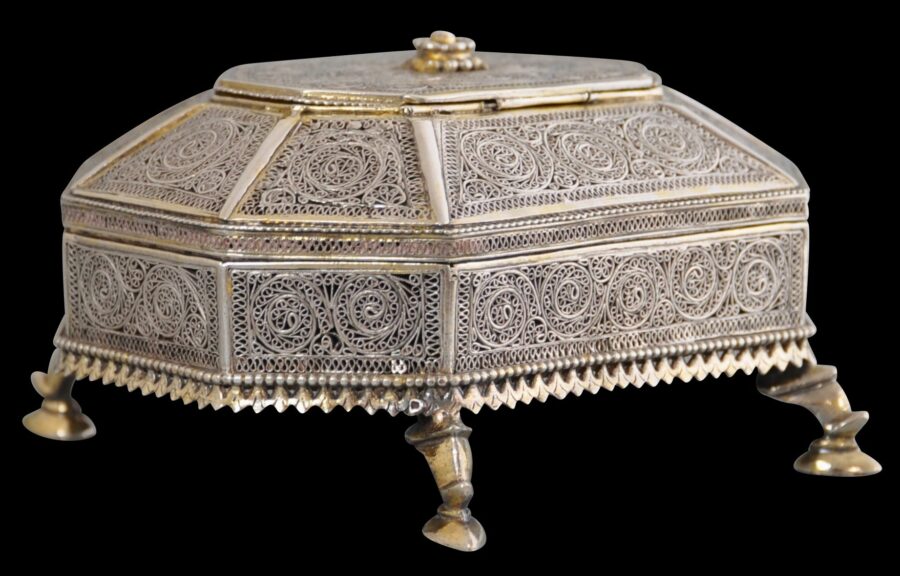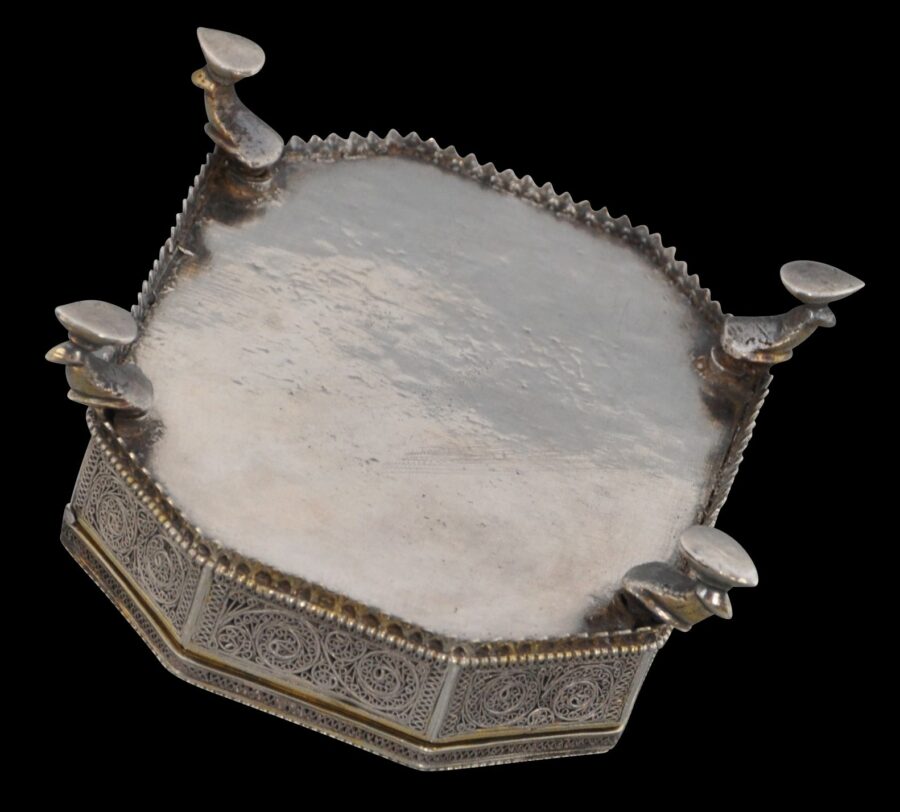This is an unusual box on the genre of colonial filigree silver for several reasons. It has an unusual hinged lid to the top of the main domed cover which lifts to reveal a shallow concealed box. The main cover also is hinged and it lifts to reveal the interior body of the box which comprises two chambers each of which also is protected with a hinged lid of filigree. These internal lids comprise the fine filigree of which the rest of the box is comprised, but also filigree panels executed in much broader wires arranged in a series of heavy spirals. It is the first time that we have seen such work incorporated into a box of fine filigree such as this.
The interior of the main hinged cover is lined with a silver sheet that has a border engraved with a leafy scroll of a type that could be either Indian or Malay. The base is of plain silver sheet.
Most of the filigree that makes up the box comprises a series of concentric circles in fine, tight filigree, within panels of various shapes. The main ribs that support the filigree panels are gilded, providing a pleasing contrast with the rest of the silver. (The construction and parcel gilding is similar to a parcel-gilded silver filigree casket and case illustrated in Jordan (1996, p. 219) which is attributed to late seventeenth century India.)
The box sits on four solid-cast, flared, zoomorphic feet which have also been gilded.
The top of the main cover is surmounted by a double flower finial. Smaller finials adorn the interior covers.
The box has a splendid patina and is in fine condition given its age and the material from which it is made. The manner of its construction, its shape and the multiple interior compartments mark this box out as unusual. Possibly, it was used to hold betel or paan and thus served as a pandan. But it might have had other uses too.
References
Jordan, A. et al, The Heritage of Rauluchantim, Museu de Sao Roque, 1996.
Mason, S. (ed.), Matthew Boulton: Selling What all the World Desires, Birmingham City Council/Yale University Press, 2009.
Parton, F., Knole, Kent, National Trust, 2019.
Piotrovsky, M. et al, Silver: Wonders from the East – Filigree of the Tsars, Lund Humphries/Hermitage Amsterdam, 2006.
Tchakaloff, T.N., Recontrer l’Autre?: XVI-XVIII Siecles, Musee des Arts Decoratifs et du Design, 2018.
Terlinden, C., Mughal Silver Magnificence, Antalga, 1987.
Zebrowski, M., Gold, Silver & Bronze from Mughal India, Alexandria Press, 1997.


